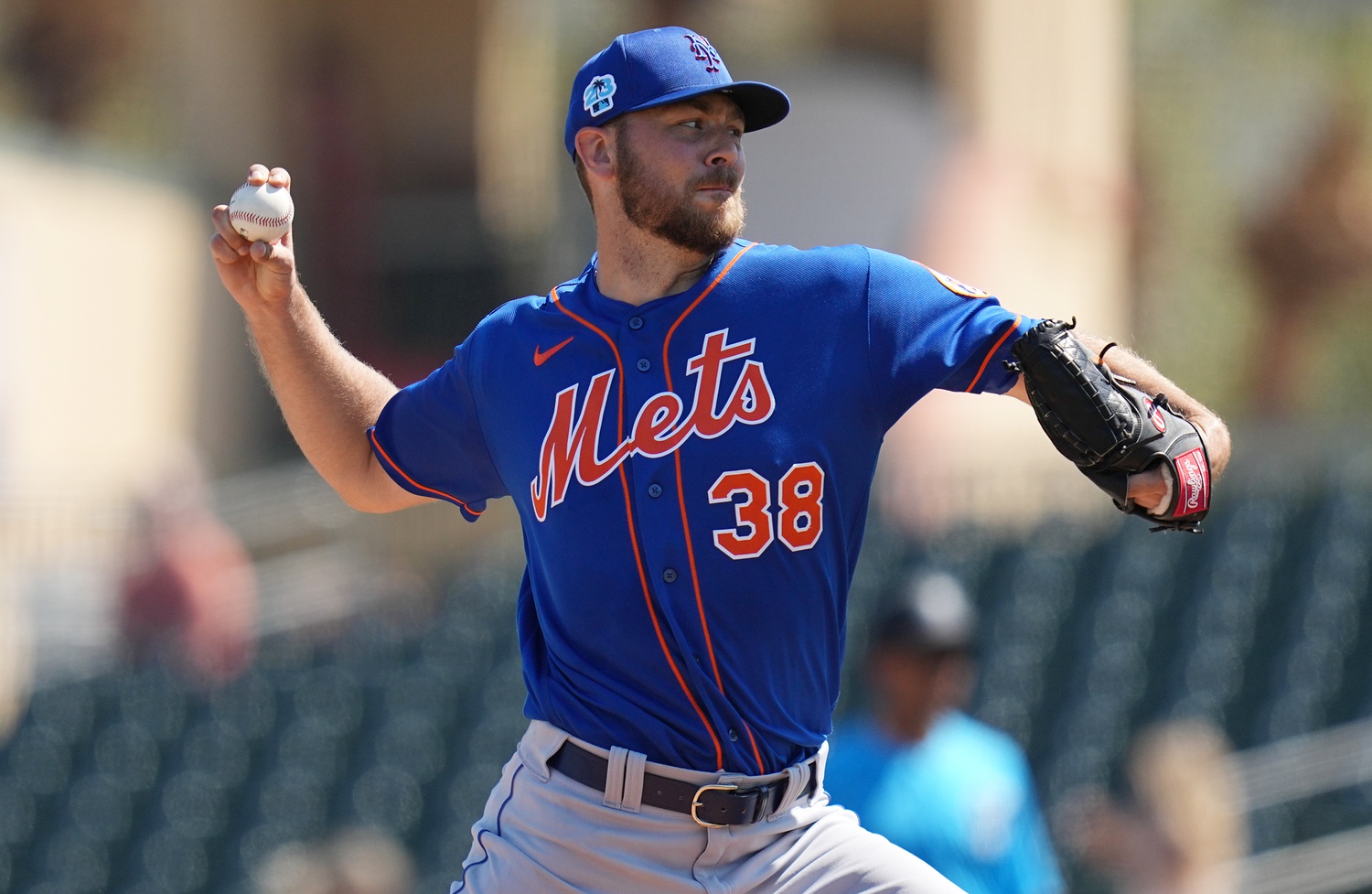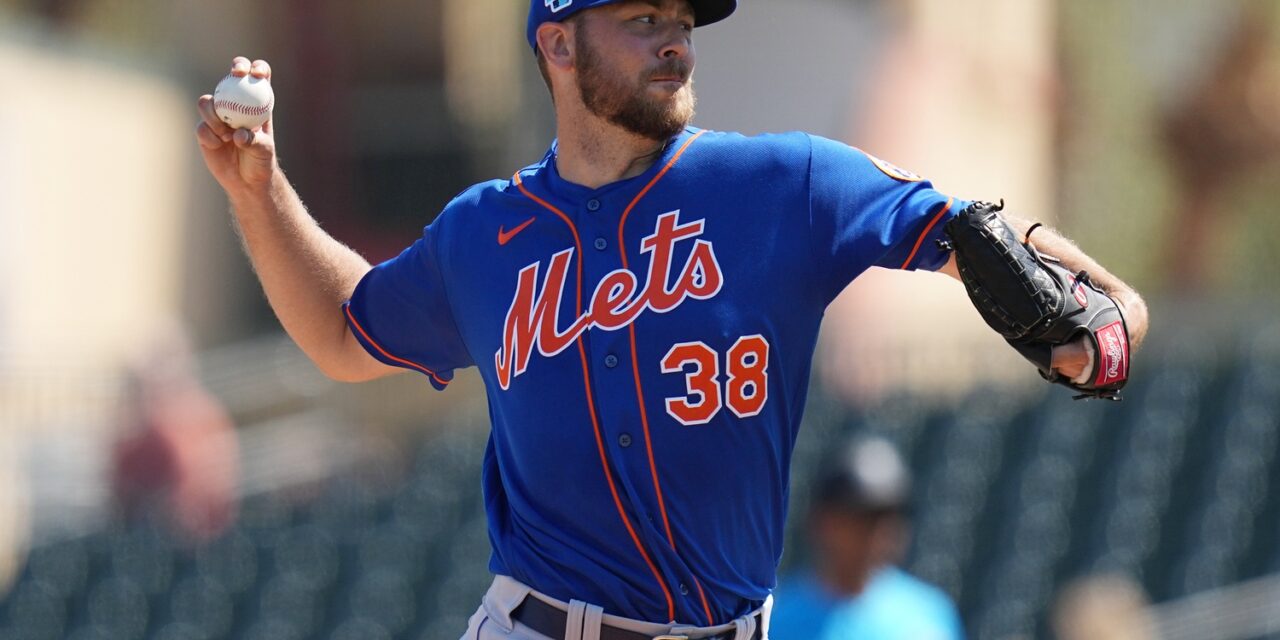
Tylor Megill. Photo by: Jim Rassol-USA TODAY Sports
Under normal circumstances, if a major league team manages to score a total of 22 runs in a series, including two games with more than six runs, one would expect them to win all three games and carry that momentum into their next series. However, the New York Mets defied those expectations. Despite winning the first game of their recent series against the Colorado Rockies, the Mets unleashed an offensive onslaught, scoring a combined 20 runs in Saturday and Sunday’s matchups. They staged impressive comebacks, led by outstanding performances from Francisco Álvarez, Pete Alonso, Francisco Lindor, Tommy Pham, Brett Baty, and other contributors. This offensive outburst positioned the Mets to dominate the Rockies and assert their dominance.
Yet, disappointingly, the Mets lost both games, falling 10-7 and 11-10, respectively. The root of the problem lies in their pitching, encompassing both the bullpen and the starting rotation.
The starting rotation has been inconsistent, partially due to injuries and suspensions affecting co-aces Max Scherzer and Justin Verlander. Although Scherzer had an outstanding outing on Friday, he had some struggles early on, while Verlander, having come off a strong eight-inning effort versus the Guardians the week prior, struggled and allowed six runs on Saturday. The trend continued with Tylor Megill, the Mets’ starting pitcher on Sunday, who had a difficult time as well, lasting only four innings and giving up six runs (including two unearned runs due to his own error) on 10 hits and two walks.
In Megill’s case, in his previous start against the Cubs, he had another challenging outing, giving up a total of six runs, two of which were unearned, over a span of 3 2/3 innings. Prior to this, David Peterson struggled with the Mets going 1-6 with an ERA of 8.08 before being sent back down to Triple-A Syracuse. Carlos Carrasco also struggled mightily and had endured a challenging start to the 2023 season. In his four starts before facing the Cubs, he had allowed an alarming 18 earned runs in a span of 18 2/3 innings pitched. With an ERA of 8.68 and a stint on the injured list, it hasn’t been a good start for the man named Cookie.
The Mets’ bullpen, particularly the middle relief, has also been a cause for concern throughout the season, especially in recent months. Even before playing at Coors Field, which is known for being a challenging pitching environment, the Mets’ relievers had shown inconsistency. Their bullpen ERA for May ranked sixth highest among all MLB teams at 4.75. On Sunday, Stephen Nogosek struggled after taking over for Megill in the fifth inning, allowing a two-run homer to Charlie Blackmon after Austin Wynns had already notched an RBI double.
Ryan McMahon added to Nogosek’s troubles with a two-run homer, extending the Rockies’ lead to 11-6. This was McMahon’s third home run in as many games during the series. In the previous game, Jeff Brigham, who had been effective as a reliever for the Mets this season, faltered in the seventh inning, surrendering a two-run homer to McMahon after a strong Mets comeback. This setback proved insurmountable for the Mets, resulting in a 10-7 loss to the Rockies amidst the rain.
“The mistake you make is getting down on pitchers after pitching here,” Mets manager Buck Showalter said, talking about Coors Field. “It’s a tough place to pitch. It’s tough for everybody. The challenge for us is to stay positive with the guys that struggled here.”
The Mets concluded their road trip with another bad loss at the hands of the pitching, marking their second consecutive defeat and a total of four losses in six games. Just about a week ago, the team was playing well, on a high, winning five consecutive games during a home stand and climbing up the NL East standings. However, the Mets have since experienced a regression and now stand at a 27-27 record, reaching the one-third mark of the season. If the Mets want to continue to stay in the playoff race, whether that’s for the NL East crown or a Wild Card spot, the pitching is going to have to improve and improve soon. That being said, although bleak at the moment, the outlook for the pitching looks good if all breaks well.
Scherzer and Verlander have been displaying flashes of brilliance lately, indicating that they are finding their rhythm on the mound. Jose Quintana, who was acquired during the offseason, is on the verge of making his return to the pitching rotation. While Kodai Senga faced a loss in his last start against the Cubs, he has demonstrated his ability to compete at the major league level, even though he is currently transitioning from Japan to the U.S.
Carrasco, despite a rough start, showcased a strong performance against the Cubs, raising hopes that he can regain the consistency he is known for as a starting pitcher. The Mets also have promising options on the horizon, such as the recovering Elieser Hernandez and Jimmy Yacabonis, who can bolster the bullpen. Furthermore, despite recent struggles, players like Jeff Brigham, Stephen Nogosek, and Tylor Megill have shown glimpses of excellence this season, and there is optimism that they can reclaim their consistency in the near future. It’s not over yet but if they have any hope of making noise deep into October, the pitching needs to get its act together and soon.














